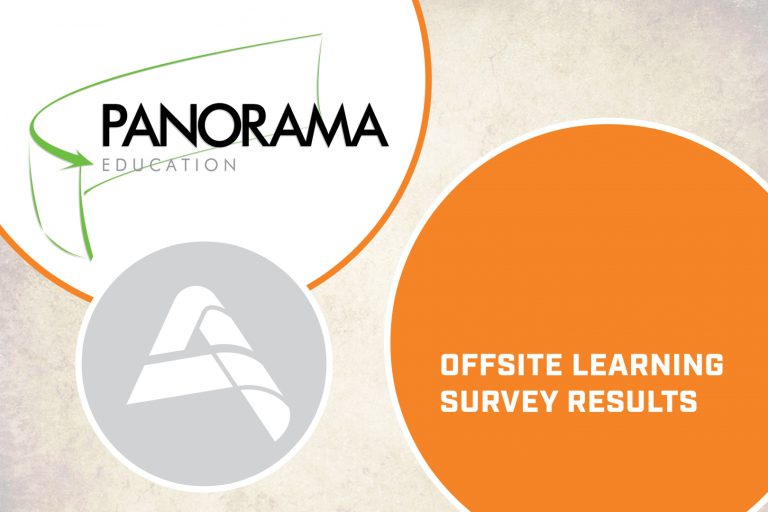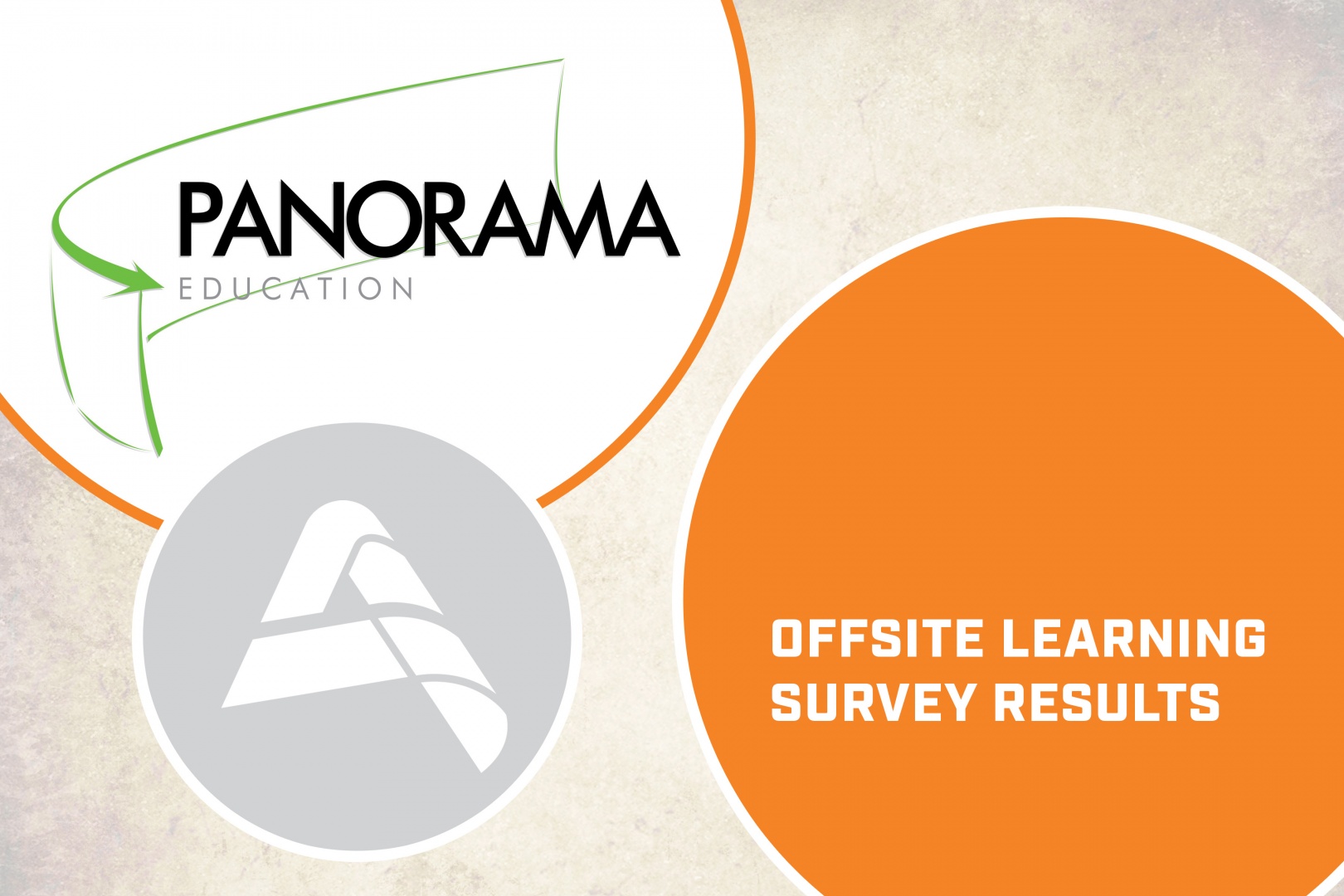

Panorama Offsite Learning Survey Results 2021
In December of 2020, the Ames Community School District surveyed students, staff, and families regarding distance education and how to meet the needs of our community with our learning models, academics, and support strategies using Panorama Education. The surveys included questions around social and emotional learning, academic needs, and staff and family engagement, among others. The purpose of the survey is to gather perception data from key stakeholders as a way to set a baseline for evaluation. This was a different Panorama survey than the Culture and Climate Survey conducted in March 2020. We are still planning to do that survey again this upcoming spring.
Last month, building and District administrators had a first look at the results specific to their building. We are now sharing a direct link with our families and community to District level results to the following surveys:
- ACSD Offsite Learning Survey: Student Academics + School Environment – grades 3-5
- ACSD Offsite Learning Survey: Student Academics + School Environment – grade 6-12
- ACSD Offsite Learning Survey: Student SEL + Support Strategies – grades 3-5
- ACSD Offsite Learning Survey: Student SEL + Support Strategies grades 6-12
- ACSD Offsite Learning Survey: Teachers and Staff
- ACSD Offsite Learning Survey: Families and Student Support
The Panorama Survey results can be found at pan-ed.com/amescsdsurveys
In the results, each survey has a summary section that illustrates the percentage of respondents who surveyed “favorable” to the questions and topics. Because this Panorama survey is new not only to our District but to Panorama, there are few scores that have comparable benchmarks nationally.
Response rate – The Panorama survey was opened in December to families first and shortly after that to students and staff. More than 1,600 families responded to the survey, followed by more than 300 teachers and staff members, and more than 2,000 students. This response rate makes this our most widely accessed Panorama survey thus far in the district.
Purpose of this survey- The purpose of this survey was to gather formation from our students, staff, and families about our learning models, students’ social and emotional learning, academic needs, and staff and family engagement, and other needs.
District Insights:
Insight #1 – Learning Model – Our grades 3-5 learners responded most favorably to questions about our learning model at 60% (broken down: 59% for mostly in-person learning, 58% for a mix of in-person learning and distance learning, or “hybrid,” and 64% for mostly distance learning), compared to our grades 6-12 learners at 49% (broken down: 36% for mostly in-person learning, 47% for a mix of in-person learning and distance learning, or “hybrid,” and 55% for mostly distance learning.) While these results may seem low at first glance, they do seem to indicate an potential enthusiasm for remote learning in our district, at least in comparison to the other options available during the COVID-19 pandemic.
Insight #2 – Student Engagement – This is an area we, along with districts across the country, have been striving to improve at the district and building level from the onset of the pandemic. Our grades 3-5 learners responded most favorably to questions about their engagement at 68% compared to our grades 6-12 learners at 55%. ACSD teachers and staff also responded 64% favorably in their surveys to questions about student engagement.
Insight #3 – Student Needs – Families responded with a 57% favorable response rate to questions about students’ needs (to questions such as: How concerned are you about your child’s academic growth right now? How concerned are you about your child’s social-emotional well-being right now? How concerned are you about your child’s peer relationships right now?) Teachers responded with 44% favorability rates, and staff responded with 35% favorability rates.
Insight #4 – Academic Needs – Overall, students across grade levels in Ames schools responded favorably to questions about academic needs, which indicates that despite all the challenges of the COVID-19 pandemic, potential concerns about learning models, and other hurdles, most students in the district responded favorably to questions about completing their schoolwork. Overall, 74% of ACSD students (grades 3-12) responded favorably to questions about academic needs. While this is good news, it is important to note that students also indicated less favorably in this part of the survey the amount of time they spend in specials or enrichment (art, music, PE, etc.), with favorable responses at 63% (grades 3-5) and 52% (grades 6-12) respectively.
Insight #5 – Learning Strategies – Social-emotional learning has emerged as an area of potential growth for the district. This portion of the survey included questions such as: How sure are you that you can figure out a good way to get your schoolwork done well? and Overall, how well can you figure out how to learn new things?; Grade 3-5 students responded to these questions with a 58% favorability rating, and grades 6-12 students responded with a 53% favorability rating.
Insight #6 – Needs With Distance Learning – Overall, students and families responded favorably to questions on this portion of the survey, indicating that they had enough food, access to district technology devices and internet, and the resources necessary to manage distance learning. However, despite mostly positive responses, ACSD students still expressed concern about the circumstances of the COVID-19 pandemic, with responses to the question, “How concerned are you about the health of your family?” ranging from 37% favorable for grades 3-5 to 52% favorable for grades 6-12.
Insight #7 – School Public Health Measures – 85% staff and teachers responded favorably to the question “How would you describe the level of COVID-related safety measures and protocols in your building to keep students healthy?” and 82% of staff and teachers responded favorably to the question “How would you describe the level of COVID-related safety measures and protocols in your building to keep staff healthy?” This is very important data for the district to have. It is also important to note that our staff and teachers also responded to the question “How difficult or easy has it been for you to implement the COVID-related safety measures and protocols in your building?” with an average 45% favorability rating.
Insight #8 – Staff and Teacher Professional Needs – 53% of ACSD staff responded favorably to survey questions about staff professional needs, with 35% responding favorably to the question “How valuable has professional development been so far this year?”, and 71% responding favorably to the question, “How helpful has leadership at your school been in resolving challenges so far this year?”. 44% of ACSD teachers responded favorably to survey questions about staff professional needs, with 21% responding favorably to the question “How valuable has professional development been so far this year?”, and 67% responding favorably to the question, “How helpful has leadership at your school been in resolving challenges so far this year?”.
Insight #9 – Additional Family Assistance – 86% of families responded favorably to this survey topic, (broken down: 77% for mostly in-person learning, 85% for a mix of in-person learning and distance learning, or “hybrid”, and 86% for mostly distance learning). This topic covered issues such as housing, food, child care, transportation to and from school, technology, and more. Overall, it appears that most families within the district are connected to the resources they need in order to meet the majority of their needs.
Insight #10 – Family-School Communication – 63% of families responded favorably to questions such as: How helpful has the communication from your child’s school been this school year? How clear has communication from the school been about COVID-related safety measures and protocols? and, When you need to, how difficult or easy is it to get in contact with our child’s teacher(s)?
To support transparency and to create a culture of feedback, we encourage our families and community to review the data on their own. We want to thank everyone who was able to participate in the survey this year. The data provides us with important feedback that allows us to better understand school climate and culture in our schools and District.
